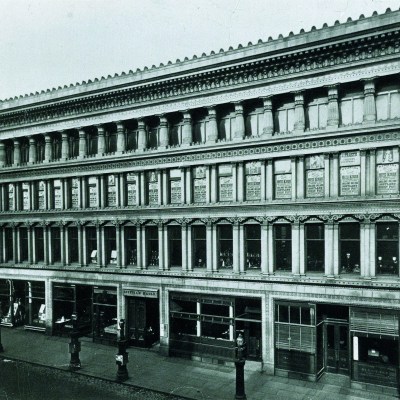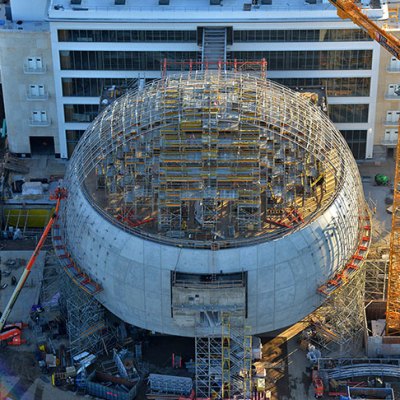The architectural highlights of the coming year will be, as usual, the result of decisions and plans made years ago. The urgency of the climate crisis is ignored by the mammoth schemes to be unveiled in 2020 – even if Heatherwick Studio’s 1000 Trees, a mixed-use development in Shanghai, nods in that direction. That cannot be said for the Jeddah Tower in Saudi Arabia, which is vying with Santiago Calatrava’s Dubai Creek Tower for the dubious honour of becoming the world’s tallest structure. But nothing looks more out of step with the times than the temporary structures that will be unveiled at Expo 2020 in Dubai in late October. The British pavilion, an ingenious cone-shaped stack of materials bearing poetic phrases generated by AI and the contributions of visitors is the brainchild of Es Devlin, who is best known as a stage designer. The event’s three thematic pavilions are designed by Bjarke Ingels (BIG), Foster + Partners and Grimshaw Architects. To the latter falls the responsibility of conveying sustainability – perhaps something of a paradox in the circumstances. The other practices, respectively, are handling the themes of Opportunity and Mobility.
In London, at Google’s headquarters in King’s Cross, designed by Heatherwick Studio and BIG and due to open in 2020, all is giving way to AI. The tenants are shifting around the massive groundscraper almost as I write. The latest occupant is DeepMind, the leading AI company now owned by Alphabet. The tree of artificial intelligence may be sprouting in the Gulf but its roots will be in N1C (London’s newest postcode).
A few hundred yards west, the area around Euston station is changing fast. The railway terminus awaits the arrival of the High Speed 2 (HS2) line and a cluster of new platforms. Grimshaw designed a soaring vaulted roof for HS2 but the firm was replaced by Wilkinson Eyre in 2017. Meanwhile at the ‘other end’, that is on the Birmingham Curzon Street site, Philip Hardwick’s Greek temple of 1838, the surviving, but long derelict bookend to the Euston Arch the architect also designed, will become the pearl in an otherwise mundane development. But at least the structure of the former railway terminus building is relatively intact; it is the pernicious rise of facadism that has been a worrying theme in conservation lately – a tick-box approach to the street frontage with neither form nor content to justify it.
Infrastructure-wise, long awaited Crossrail, which I suggested this time last year would be open now, still lurks under our feet and sits, ready to go, out to the east and west of the capital. These delays make me cynical about the new government’s ability to roll out major infrastructure projects across the north, as promised. As for Crossrail2 (a proposed north-south line across London), I think we won’t hear much of that in 2020.
The Egyptian Halls in Glasgow, designed by Alexander ‘Greek’ Thomson and completed in 1872.

If there is one impending conservation disaster that must be told and retold at ever louder volume, even more insistently than that of the Whitechapel Bell Foundry it is that of the long crumbling Egyptian Halls in Glasgow, now in the running to be listed as one of Europa Nostra’s most endangered sites. The late Gavin Stamp, writing in Apollo and elsewhere, was the staunchest and most eloquent of the many advocates for Alexander ‘Greek’ Thomson. He wrote and campaigned continuously for the better treatment of buildings by Glasgow’s first architectural son (now overshadowed by Charles Rennie Mackintosh) yet the burghers of Scotland’s second city were deaf to his pleas. The Egyptian Halls are an egregious example of civic neglect and inaction.
I am beginning to wonder if some kind of bad karma hangs over Egyptian-style buildings. I have been worrying about Temple Mill, Leeds, a Historic England building at risk, ever since I discovered its extraordinary story and wrote about it in my book Factory, and its future remains uncertain. James Marshall’s great flax-weaving shed is fronted by Joseph Bonomi’s Egyptian temple, the administrative block, of 1843. The shed was top-lit by glass lanterns (a touch of John Soane from architects who knew his work well), it boasted a green roof, where sheep once grazed (until they fell through the glass, that is), and involved many ingenious ideas about heating, ventilation and illumination. As it is so emblematic of our current concerns, why not bring it back to life as an actual Northern Powerhouse?


